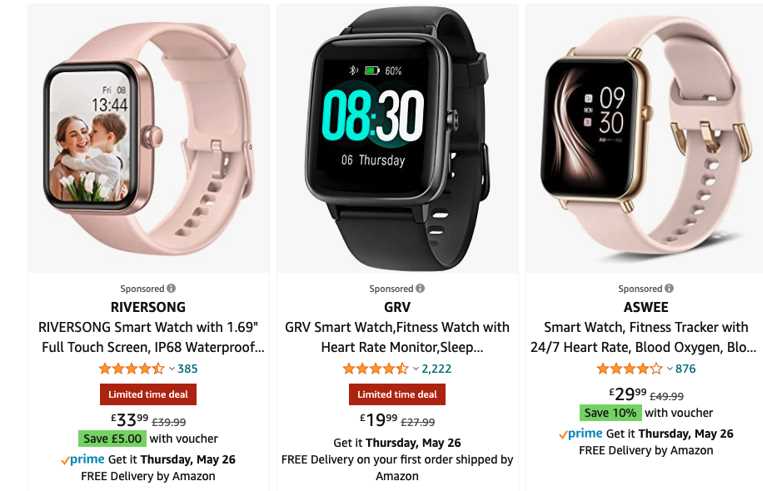Most people selling on Amazon will start their journey with Amazon Seller Central, but as a brand gets more established there may come the opportunity to expand your offering through Amazon Vendor Central.
1. What is it?
For those that are new to selling through Amazon or even just in the researching phase of the process, Amazon Vendor Central is the offering from Amazon that allows you to sell to them in bulk at a wholesale price in order to allow them to fulfil the orders, including setting the pricing, dealing with shipping and customer service too. This means that you benefit from being In Stock, Shipped and Sold By Amazon, increasing your sales potential.
2. Can anyone join Amazon Vendor Central?
Unlike seller central which is open to anyone that wishes to sell non-prohibited products to Amazon buyers with no real barrier to entry aside monthly selling fees and associated costs, Amazon Vendor Central is by special invitation only and usually there is no way to force an invitation.
There are, however, things that can be done to help you get noticed by Amazon. For example, the most important thing to Amazon is selling potential, if Amazon can see evidence of a strong demand for your products you will stand out as a brand of interest. Similarly, you can attend and exhibit trade events where often Amazon scouts will be looking for business opportunities.
3. What are the payment terms and return for vendors?
The payment terms and return are usually the biggest sticking point for those researching whether to accept the invitation to join Vendor Central. Unlike seller central, which usually pays within 7 to 14 days, vendor central typically has three different payment terms:
- 30 Days (with a 2% discount in Amazon’s favour)
- 60 Days
- 90 Days
This means that if you do not have another source of income you may struggle with cash flow waiting two to three months between payments.
Similarly, with seller central, although there is more work involved as the seller is responsible for every step of the sales process, there is also the opportunity to set your own profit margins. With Vendor Central, when you are invited, Amazon will lay out their terms, including the wholesale price they’re looking to pay, and there isn’t usually a lot of space for negotiation. Within the Vendor Central interface, you do have the option to adjust your pricing to match what Amazon is after, or mark your stock as unavailable, in which case Amazon will not sell it.
4. What are Amazon Vendor Advertising Options?
A benefit of being Amazon Vendor Central is the access gained to a wider range of options within Amazon Marketing Services (AMS). The Vendor version of AMS includes hyper-targeted keyword based ad-campaigns to drive traffic directly to product pages, meaning your consumer base is a lot larger as a result.
Through Amazon Advertising Console, Vendors will also have access to a variety of advertising opportunities using a Pay Per Click (PPC) model. PPC is an advertising format where you incur a small fee every time someone clicks on your ad, usually depending on the level of competition for targeted keywords or whether it is a peak time such as Black Friday or Cyber Monday. These factors can increase the costs per click (CPCs), but volume of sales will also increase around these times.
Amazon Sponsored Brands
Formally called Amazon Headline Search Ads, Amazon Sponsored Brand Ads appear either above or below product search results.
To run Amazon Sponsored Brands, you must be Amazon brand-registered, you must also conform to a few basic guidelines, and your product(s) must be within eligible categories.
Amazon Sponsors Products

You can set up Amazon Sponsors Products for any single product (providing you’ve already won the Vendor Buy Box). Amazon states “The Buy Box is the display on a product detail page with the Add to Cart button that customers can use to add items to their shopping carts. When one of your listed items appears as the default on the product page, you “win” the Buy Box, increasing your chances of selling that item.” These sponsor product ads appear in either product search results or below product detail pages.
They are featured more prominently than organic results and you have two targeting options – Automatic and Manual. As with Sponsored Brands, your products must fall into certain categories and tick a few guideline boxes.
These categories are:
- Appliances
- Automotive
- Arts, Crafts, and Sewing
- Baby Products
- Beauty
- Consumer packaged goods
- Mobile and accessories
- Clothing and accessories
- Collectibles
- Computer and electronics
- Fine art and Furniture
- Grocery and Gourmet Food
- Health and Personal care products
- Home and Kitchen
- Industrial and Scientific
- Luggage
- Movies and TV
- Music and Musical Instruments
- Office products
- Patio, Lawn, Home and Garden
- Pet Supplies
- Shoes
- Sports and Collectibles
- Software
- Tools and Home Improvement
- Toys and Games
- Video Games
- Watches
5. Do I have to accept an invite if I receive one?
You have received an invite and have decided that after researching the offering you would like to decline. This is allowed. Amazon shouldn’t penalise you for rejecting their offer to join Amazon Vendor Central, but there are exceptions. If you meet any of the following criteria, you are a manufacturer, you sell to other retailers or distributors or you sell through Amazon marketplace, Amazon may have cause to suspect your seller central account.
Amazon expects to be treated like any other potential retailer with access to wholesale prices.
If you need advice on Amazon Vendor Central or perhaps help getting started, contact Arthia, a full-service UK Vendor Central agency and speak to their team of trained Amazon consultants.